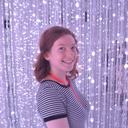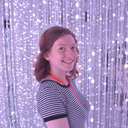Hello again! As promised, this blogpost will provide some feedback on the teacher training sessions I have been holding with my colleague Yoshitaka for EYS teachers interested in delivering our rhythmics-inspired early years music program. As EYS is expanding the program, we are on the hunt for more teachers. Throughout October and November, we held a total of 6 training sessions, each attended by 2-5 teachers from a wide variety of instrument specialisms. It has been a really interesting (and fun!) experience to meet teachers from different musical, educational and teaching backgrounds and with varying approaches and interests. A few things of note:
* When discussing what image the teachers had of rhythmics-inspired sessions, most did have the idea that sessions are about enjoying and experiencing a musical environment, rather than “being taught” music. Though I did feel the need to stress the importance of “exploration”, encouraging children to find things out for themselves and to have free-time to explore instruments, sounds and various sensory experiences, and the need to pick-up and respond to what the children naturally do; children have their own beat, sense of rhythm and sounds they want to make. A teacher must notice what comes from the child and can then echo them, encouraging true self-expression.

* There was a prevailing image that teachers must play the piano – we stressed how this limits where the teacher can move, creates distance between teacher and participants and makes it more difficult to give clear instructions. We showed how to effectively use sound recordings and encouraged teachers to use other instruments, especially their own, and instruments which allow teachers to move more.
* As EYS is a music studio with a cupboard full of quality instruments, lets use them! It is such a valuable experience for children to hear and touch real instruments and the teachers at our training were excited by the prospect. It doesn’t matter if you can’t play violin or sanshin or have never really played a bongo before, bringing the instruments in to the session and exploring them together is a fantastic learning experience. The teachers were also excited by the idea of playing their specialty instruments – the chance to hear a great performance is something which the guardians of the children are also incredibly happy to hear.
* We discussed including songs in different languages, music from around the world and music from a wide variety of genres – this was something many teachers had not thought of, the image being of children’s songs only, but all agreed on the merits of creating a culturally rich session.
* When trying out activities and playing with the session goods (rhythmic scarves, finger puppets, touch-and-feel books etc), some teachers had lots of great new ideas for activities. Some teachers with experience working with small children or teaching rhythmic sessions themselves shared some of their successful activities; I learnt a lot myself and am excited to try their suggestions in my own sessions!
Through the training sessions, we have been fortunate to meet some teachers who we feel confident could deliver excellent sessions that fit with the ethos of EYS and some teachers who with a little more experience and training would also be a great asset to the EYS early years program. I’m excited to have more lovely colleagues!
/assets/images/639113/original/078bc2ae-368e-4a35-af77-33f423b6a250?1669969870)


/assets/images/639113/original/078bc2ae-368e-4a35-af77-33f423b6a250?1669969870)
